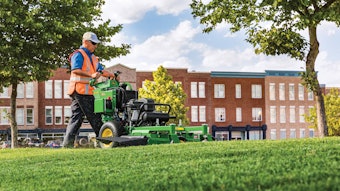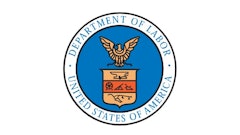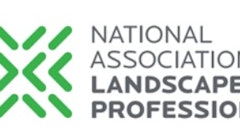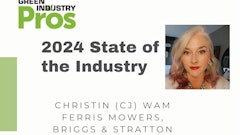
Looking Ahead To 2024
While several landscape companies have say they anticipate a bumpy year due to the 2024 presidential election, many have chosen to remain optimistic for 2024.
“There could be a slight downturn heading into the spring, but we feel like consumer confidence is still relatively high in our market, and we will rebound nicely as we head into midspring,” says Keith Bowman, president of horticultural service and business development for McHale Landscape Design headquartered in Upper Marlboro, Md. “We believe we will return to more of a ‘normal’ growth pattern over the next three to five years. There is still a lot of opportunity out there, but everyone’s going to have to look a little bit harder. We believe the future is bright, but opportunity won’t be coming as easy as it has.”
Andrew Bray, senior vice president of government relations and membership for the National Association of Landscape Professionals (NALP), echoes the sentiment that 2024 may be a bumpy—and busy—year.
“I think everyone understood that the House was a mess with some bitter divides within our own political processes and parties, and I expect 2024 to be even bumpier,” Bray says.
On that note of governmental policies, Bray mentions several other political and policy items that may affect the green industry landscape for 2024.
Presidential election
Bray advises landscape pros to buckle in for what should be an interesting year due to the presidential cycle.
Christin Wam, senior director of marketing, Ferris Mowers, Briggs & Stratton, says Ferris is planning for uncertainty in 2024 due to the election year.
“Going into 2024, we have taken into account the interest rates remaining high and the election year always causing some economic uncertainty and resulting declines in consumer confidence,” Wam says.
H-2B
For the fiscal year of 2024, the landscape industry was granted an additional 64,176 visas.
“Many folks that filed for the first half cap in January should be happy to know that they're going to have access to an additional 35,000-plus visas, and that hopefully makes it a lot more likely that they're able to obtain their workers," Bray says.
The annual cap is 66,000 visas—33,000 for the first half, which is Oct. 1 through March 30, and 33,000 for the second half, which is April 1 through Sept. 30.
“Without supplemental visas, based on historical data, a landscape contractor would probably have somewhere between a 30 and 40 percent chance of getting H-2B visas, which is a terrible percentage,” Bray says. “With the supplemental visas, which gives you access to an additional 35,000 additional visas, we believe that will increase your chances to getting visas by somewhere between 75 and 85 percent.”
Bray adds that if a company were to file for visas in January and get into the lottery, if they’re in groups A and B, C and D, they are in good shape, but if they are in groups E or later, they should start thinking of other options like the northern triangle route.
“For those folks, that’s when you need to think about applying for supplemental visas as soon as possible and consider using workers from the northern triangle countries, which is El Salvador, Guatemala and Honduras. You have a greater chance of getting visas if you’re willing to go there,” Bray says. “The Biden Administration has specifically carved out visas from those countries as part of their attempts to try to curtail chain migration by investing in those countries and having more money flow back into those countries when they legally come here, and then legally return to their country.”
Finally, Bray notes that the industry should be aware of a piece of legislation called The Seasonal Employment Protection Act, which would give certainty for existing users of the H-2B program and would double the cap.
“This is legislation we fully support as an industry,” Bray says.
Regulations
One regulation coming down the pipeline is that the Occupational Safety and Health Administration (OSHA) is planning to put forward a national heat standard.
“They’re specifically targeting indoor and outdoor work, and our industry is one they’re looking at closely,” Bray says. “We fully support standards that make sense and that are not too prescriptive because most of the members in our industry are doing everything right already. We have been working with OSHA and the Department of Labor. We actually had some of our members participate in the small business roundtables about the rule, where we were allowed to get some feedback on what works for the industry and what doesn't work for the industry, all keeping in mind that we want to make sure all of our workers are remaining safe. We want to avoid these things that get a little too prescriptive because what works in Virginia is different than what's going to work in Arizona.”
Bray says the association is expecting something on that front in late spring to early summer of this year.
Additionally on the regulations front, the California Air Resources Board put a law into effect in 2024 that prohibits the sale of any gas-powered landscape equipment.
“We work with CARB, and we were desperately asking for a reprieve in the commercial industry, but we were rebuffed,” Bray says.
However, he notes that if landscapers operate in California, this law only prohibits the sale, so landscapers can still use and maintain that gas-powered equipment as long as they’d like.
Second, through the CARB CORE program, there are some funds available to industries to try to get rebates and recoup some costs of purchasing non-gas-powered equipment. That money has predominantly been drained, but NALP is going back to the California Legislature to get those coffers refilled for 2024.
“The other thing that's important to know is that CARB and California technically don't have the ability to regulate emissions. That is something that is the exclusive purview of the U.S. Environmental Protection Agency,” Bray says. "I think this is important if you're living in another state or locality where these things are being considered. Those states and localities technically don't have the legal authority to regulate emissions. We are not against transitioning the industry to cleaner and more efficient ways of doing things, but we would call that a responsible transition. We think any time there's just going to be a ban by a certain date, without taking into account the technical feasibility and some of the funding issues, that's where we don't support it.”
Farm Bill
The Farm Bill is a massive omnibus package related to the agricultural industry, but it’s also a vehicle to try to include item relating to the green industry and responsible pesticide use, Bray says.
“We have been pushing for the last year to have some inclusion in some language that protects the ability to use pesticides and restricts localities from preventing or banning wholesale the ability to use pesticides on lawns,” Bray says. “In places like Maryland and Maine, we’ve seen onerous bans put in place where you can’t use a pesticide on a lawn. That’s something that's just terrible for our industry, and very short-sighted understanding that our members are trained and certified applicators.”
Bray notes that the Farm Bill was supposed to pass in 2023, but like many other pieces of legislation, it got pushed into 2024.
“The timeline is murky on how this is all going to come together, but we anticipate by the summer or into early fall of next year, this massive bill will be passing, and so we're going to be working very hard to make sure we get that language included in there because this is kind of a once every five year cycle,” Bray says. “We got close five years ago in 2018, but I think we're close this year. I remain optimistic that we can secure a victory there.”
Overtime regulations
Additionally, NALP continues to monitor forthcoming overtime increases, specifically the white collar exemption.
“It could impact folks making between $35,000 and $50,000 and work more than 40 hours a week,” Bray says. “It means that certain types of workers with certain job requirements and in certain job capabilities are exempt from being paid overtime. The Biden Administration is proposing raising that threshold to around $50,000. So, if you have somebody in your organization that you think might be working more than 40 hours, they’re not a manual laborer and they’re making somewhere between $35,000 and $50,000, you want to be able to start thinking about what it’s going to look like.”
Bray says this type of regulation may go into litigation, which is what happened when the Obama Administration tried to raise the threshold about eight years ago.
“I don’t think anything is going to be finalized this year, but smart landscape contractors should be thinking about this and how it could impact their industry and their organization,” Bray says.
For more on the current state of the industry, check out these articles below:
- Find a review of 2023 here.
- Learn about top industry trends here.
- See what landscape pros' top advice is here.
- Discover what experts' individual takes are in the following Q+As:
- Ditch Witch
- Volvo Construction Equipment
- RedTree Landscape Systems
- Briggs & Stratton
- E&M Landscape Services
- McHale Landscape Design
- Vectorworks
- See additional commentary on the State of the Industry here.





























